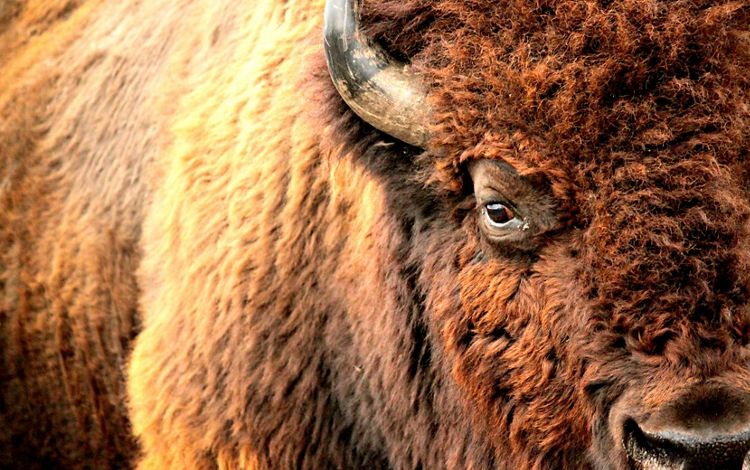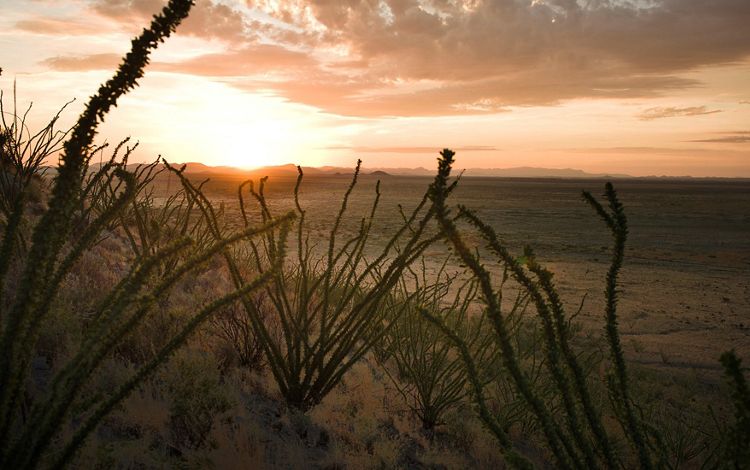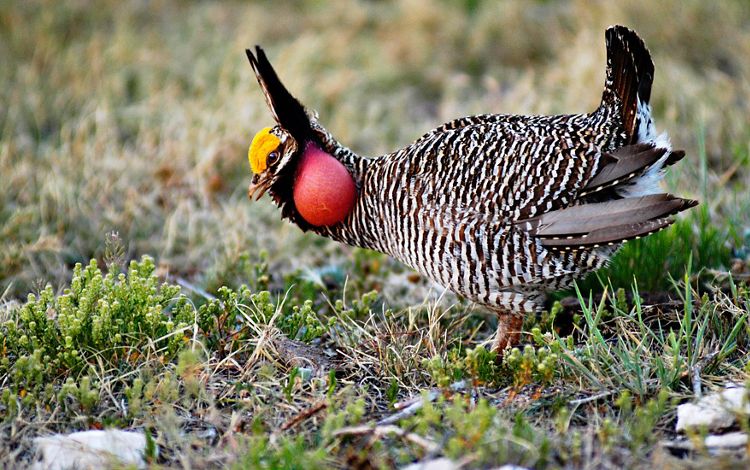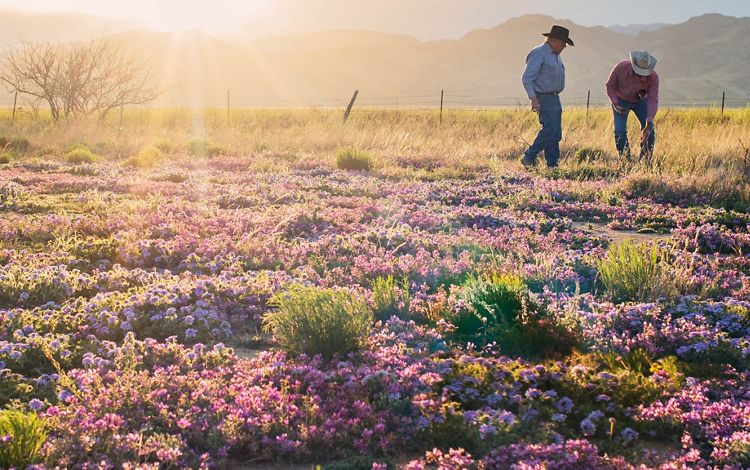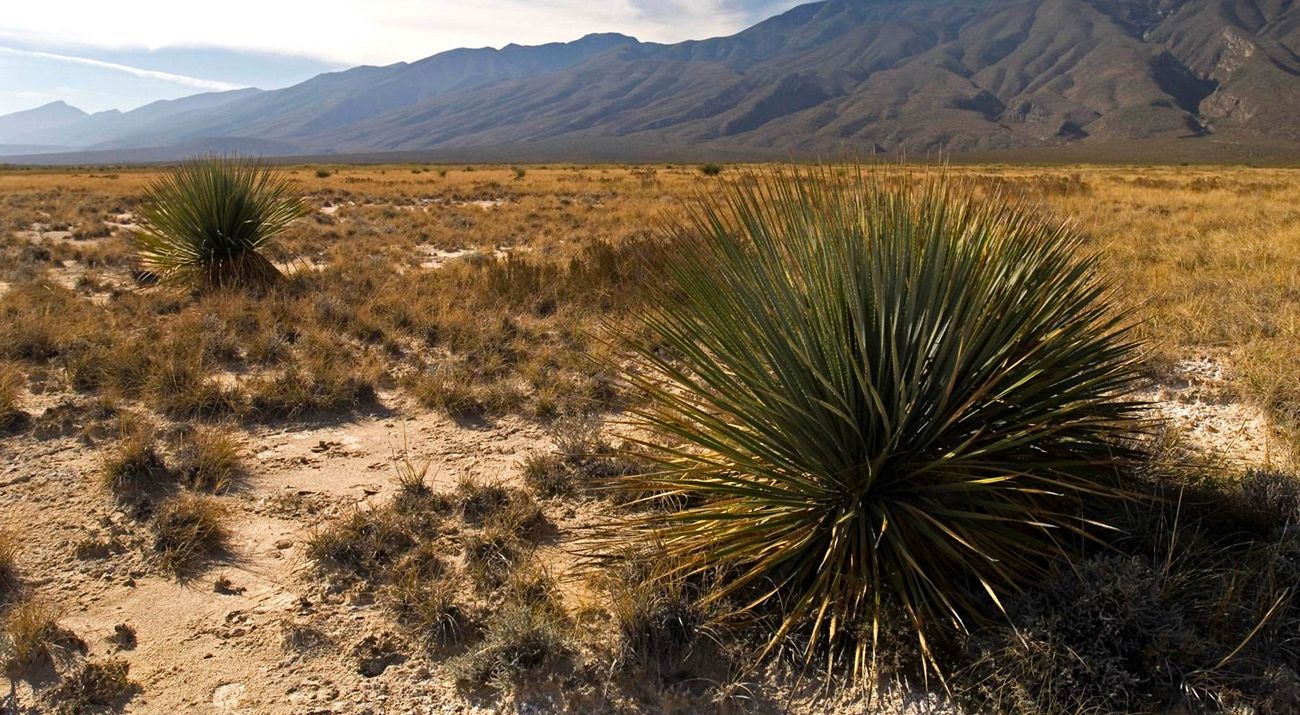
Prairie and Desert Grasslands: Our Most Fragile Lands
New Mexico hosts some of North America’s best remaining grasslands.
Grasslands represent the most threatened habitat on Earth and the least protected. Less than two percent worldwide and just four percent in the United States have received formal protection.
Some of North America’s largest and best remaining grasslands can be found in the prairies of eastern New Mexico and West Texas, and in the desert grasslands of southern New Mexico, southern Arizona and northern Mexico. However, residential sprawl, energy development, agricultural conversion, groundwater withdrawal and climate change jeopardize these landscapes.
It will take unprecedented collaboration and resources to protect New Mexico’s prairie and desert grasslands both for its natural value and for the benefit of people who need healthy, resilient landscapes for life and livelihoods. The Conservancy is off to a good start in protecting and restoring this bi-national “working wilderness.”
Quote
It will take unprecedented collaboration and resources to protect New Mexico’s prairie and desert grasslands.
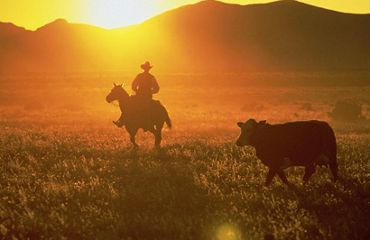
PRAIRIE GRASSLANDS
MESCALERO SANDSHEET
Located in eastern New Mexico and western Texas, the Mescalero Sandsheet’s sand shrubland and shortgrass prairie represents some of the largest remaining intact grasslands in North America. The landscape — which boasts stands of shinnery oak and playa lakes — retains and purifies water, generates farming and ranching income, and harbors prairie species including the dunes sagebrush lizard, black-tailed prairie dog, burrowing owl, Cassin’s sparrow and ferruginous hawk.
For years, the Conservancy has worked with government agencies, local communities and other partners in this expansive prairie landscape to protect fragile habitat and a traditional farming and ranching way of life. Thanks to science-based management and a long-term commitment to protection and stewardship, these efforts have resulted in the establishment of sanctuaries for imperiled prairie plants and animals — and North America’s best strongholds for shortgrass prairies and playa lakes — on both public and private lands.
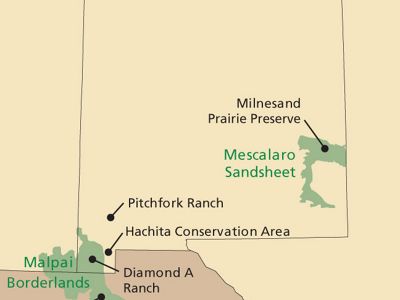
DESERT GRASSLANDS
BORDERLANDS
The Conservancy is working on both sides of the U.S.-Mexico border to establish 6.2 million acres of protected areas and improve management practices on 7 million additional acres. Conserving this mosaic of public and private lands will benefit people who depend upon an open landscape for their livelihoods, as well as jaguars, sandhill cranes, thick-billed parrots, black-tailed prairie dogs, bison, Chiricahua leopard frogs and other northern and southern species whose ranges cross geographic and political boundaries.
SKY ISLANDS
Sky islands are desert mountains linked by grasslands, a feature unique to the Desert Southwest. Thanks to support from the National Fish and Wildlife Foundation and others, the Conservancy and its partners in southwestern New Mexico and Arizona are protecting and restoring large, intact desert grasslands capable of supporting wildlife and natural processes that keep the landscape healthy. The Conservancy is also restoring degraded areas that support rare or declining species and some of the sky islands’ few remaining valley-bottom streams and wetlands.
BURRO CIENAGA - HACHITA GRASSLANDS
The Conservancy is studying the distribution and habitat needs of the imperiled Chihuahua scurf pea, a candidate for federal ESA listing by the U.S. Fish and Wildlife Service and a BLM Sensitive Species. Information about this rare plant’s needs will accelerate the pace of restoration and shape strategies at this site and in other sky island desert grasslands. At the Pitchfork Ranch, the Conservancy is identifying and mapping priority restoration areas and encouraging grass recovery using a variety of restoration techniques to improve watershed condition for Burro Cienaga, a two-mile perennial wetland which harbors the federally listed Chiricahua leopard frog and Gila topminnow.
JANOS GRASSLANDS
Considered one of the premier remaining desert grasslands in North America, the Janos Grasslands of northern Mexico harbor the world’s largest complex of black-tailed prairie dogs. The landscape also supports other grassland animals and birds, including the black-footed ferret, aplomado falcon, long-billed curlew, bison and the largest breeding population of burrowing owls in the world.
In 2009, the Mexican government declared 1.3 million acres in the Janos Valley as the Janos Biosphere Reserve.
The decree marked the first time Mexico officially protected — and allocated resources toward — desert grasslands. The reserve extends from the northernmost mountains of the Sierra Madre all the way to the New Mexico border.
HELP PROTECT THESE ESSENTIAL, YET FRAGILE LANDS
Protecting New Mexico’s prairie and desert grasslands means preserving a vast network of North America’s best remaining wild places interspersed with traditional working farms and ranches. Together, we can preserve this treasured landscape for generations to come. Help support prairie and grassland conservation efforts.
